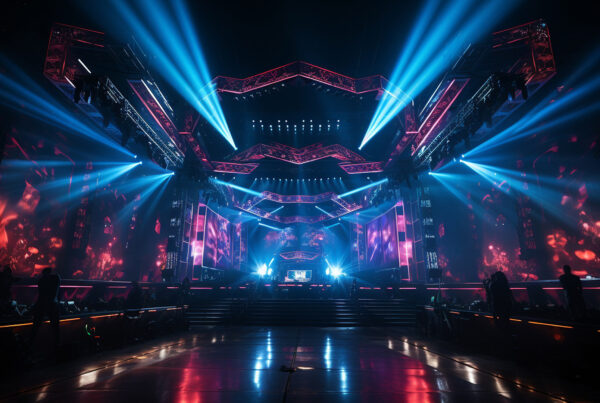Live concerts are a high-energy blend of sound, lighting, video, and stage effects—all of which demand reliable and flexible power. For touring artists, outdoor festivals, and multi-stage events, permanent infrastructure isn’t always an option. That’s where portable electrical solutions come in, enabling production teams to set up powerful, safe, and scalable power systems wherever the event takes place.
This blog explores the role of portable electrical equipment in concert productions, best practices for deployment, safety considerations, and tips for choosing the right solutions to ensure your show runs flawlessly.
Why Portable Electrical Solutions Are Essential
Concerts often involve complex setups: massive lighting rigs, powerful PA systems, LED video walls, special effects like pyrotechnics or CO2 jets, and backline equipment. All of these require stable, reliable electricity.
Portable electrical solutions make it possible to:
-
Power venues without permanent infrastructure.
-
Quickly adapt to outdoor locations or temporary stages.
-
Scale energy supply based on event size and equipment load.
-
Reduce downtime caused by inadequate or unsafe electrical setups.
Without portable solutions, production teams would face logistical nightmares, from running long extension cords across open fields to overloading venue circuits.
Key Components of Portable Power Systems
Generators
Generators are the backbone of temporary concert power. Modern units are compact, fuel-efficient, and capable of delivering large amounts of electricity safely. Features to look for include:
-
High wattage output to support PA systems, lighting, and video.
-
Parallel capability to connect multiple generators for larger events.
-
Noise reduction technology for quieter operation near audiences.
-
Safety features like automatic shutdowns and voltage regulation.
Distribution Panels and Boxes
Once power is generated, it must be distributed efficiently. Portable distribution panels allow technicians to divide electricity across different stage zones safely. These panels often include:
-
Circuit breakers and RCD protection for safety.
-
Clearly labeled outputs for lighting, sound, and video.
-
Weatherproof housing for outdoor events.
Cabling and Connectors
High-quality, heavy-duty cabling is essential for safe power transmission. Portable electrical solutions rely on:
-
Powerlock, CEE, or stage-grade connectors for high-current applications.
-
Color-coded cables for easier setup and troubleshooting.
-
Cable management tools like ramps, ties, and covers to prevent tripping hazards.
UPS and Battery Backups
To protect sensitive equipment like digital mixing consoles or LED video walls, battery backups and uninterruptible power supplies (UPS) are vital. These devices provide:
-
Continuous power during brief generator outages.
-
Protection from voltage spikes or drops.
-
Smooth operation for digital systems that cannot tolerate sudden power loss.
Safety Considerations
Safety is paramount when dealing with temporary electrical setups. Production teams should always:
-
Conduct load calculations to prevent overloading circuits.
-
Ensure proper grounding for all generators, panels, and equipment.
-
Keep all connections dry and elevated from potential water hazards.
-
Train staff on emergency shutdown procedures and fire safety.
-
Inspect cables and connectors for wear, fraying, or damage before each event.
Using portable electrical solutions without proper safety protocols can lead to equipment damage, production delays, and serious injury.
Planning and Deployment
Proper planning is critical to ensure portable electrical solutions work efficiently:
-
Map the power needs of every system—lighting, audio, video, and special effects.
-
Determine generator placement for optimal safety, noise control, and access.
-
Plan cable routing to minimize trip hazards and interference.
-
Assign technicians to monitor and troubleshoot power systems throughout the event.
Advanced event productions often use modular power setups, allowing quick scaling or relocation of panels, generators, and distribution points. This flexibility is especially important for festivals or multi-stage concerts.
Advantages of Portable Electrical Solutions
Using portable electrical systems offers several benefits:
-
Flexibility: Adaptable to any venue or stage configuration.
-
Scalability: Easy to add more generators, panels, or UPS units for larger productions.
-
Cost-effective: Avoids permanent infrastructure costs while providing professional-grade power.
-
Safety: Professionally designed portable systems include built-in protection and monitoring.
-
Efficiency: Reduces setup time and allows for faster event turnover.
Choosing the Right Provider
Not all portable electrical solutions are created equal. When selecting a provider or rental company, consider:
-
Experience with live events and concerts.
-
Availability of modern, high-capacity generators.
-
On-site technical support and troubleshooting.
-
Customizable power distribution setups.
-
Transparent pricing and clear documentation for each unit.
Trends in Portable Electrical Solutions for 2025
Looking ahead, concert productions are seeing innovations in:
-
Hybrid power systems combining generators with battery packs for cleaner, quieter energy.
-
Smart monitoring of load, voltage, and temperature for safer operation.
-
Eco-friendly generators using biodiesel or solar-hybrid technologies.
-
Compact modular distribution panels for faster setup and teardown.
These trends allow event teams to maintain high production standards while reducing environmental impact and logistical complexity.
Conclusion
Portable electrical solutions are the unsung heroes of concert productions. From powering lighting rigs to PA systems and video walls, they provide the flexibility, safety, and reliability that modern events demand.


